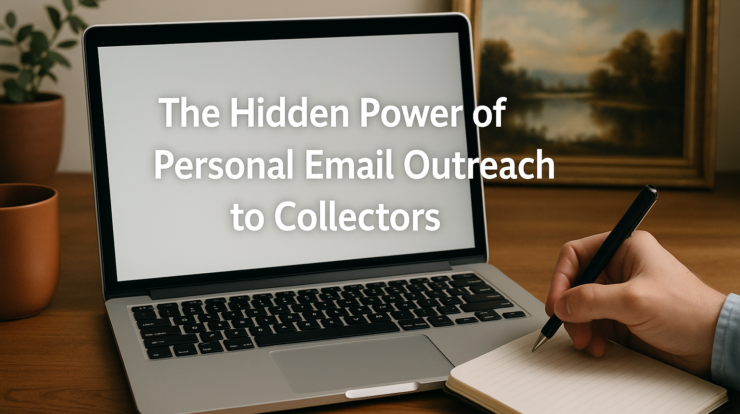
The Hidden Power of Personal Email Outreach to Collectors
We all know the value of sending a polished, professional email newsletter. It’s efficient, scalable, and keeps your audience in the loop. But there’s another kind of communication that’s often even more powerful—and most artists overlook it completely.
I’m talking about personal, one-on-one email outreach.
Not a blast to thousands. Just a quick note to one collector who has shown interest in your work. Maybe someone who visited your booth, commented on a post, or purchased from you in the past.
These small, consistent efforts can drive surprising results—not just in sales, but in deepening relationships that fuel long-term success.
Why Personal Emails Work
Art is personal. It’s emotional. So it makes sense that the decision to purchase art is influenced by connection and trust. When you send a direct, personal message, you’re telling the collector: I see you. I thought of you. I believe this piece might speak to you.
That’s a very different message than “Here’s my latest work—hope you like it.”
Collectors respond to that care. They appreciate the extra attention. And even if they’re not ready to buy, they remember how it felt to be personally invited into your creative world.
Build Your Priority List
If you have an email list—even a small one—start segmenting it. Who are your most engaged followers? Who has bought from you before? Who shows up to your events, comments on your posts, replies to your newsletters?
Make a “priority collector” list of 20, 50, or even 100 names. These are the people who should hear from you directly when something new is available.
And here’s the best part: your list doesn’t need to be big to be effective. When I speak with artists, I often remind them that even five committed collectors can make a huge difference in a year’s revenue.
Personal Doesn’t Have to Mean Time-Consuming
You don’t need to write a novel to each person. A few sentences is enough:
“Hi [Name], I just finished a new piece that reminded me of our conversation about color and movement. Thought you might enjoy seeing it before I post it publicly. Hope you’re well—let me know what you think.”
You can rotate through your list each week—maybe send five or ten messages every Friday. It takes 30 minutes. But it builds serious momentum.
Over time, this kind of direct outreach can lead to:
-
Quicker sales after new work is released
-
More commission requests
-
Referrals to friends and family
-
A collector base that feels connected and loyal
Give a Preview Before the Public
One strategy that’s worked especially well for us at the gallery is offering a preview of new arrivals to select collectors before we release them in our general newsletter. It creates a sense of exclusivity and rewards those who have shown sustained interest.
You can do the same as an independent artist. Send a private email to your priority list a day or two before you post new work online. Let them know they’re getting an early look.
“I wanted you to have first access before I share these more broadly tomorrow.”
It doesn’t just drive early sales—it builds anticipation and deepens the bond between you and your most dedicated followers.
Don’t Let the Silence Stop You
Not every message gets a response. That’s fine. You’re playing a long game. These emails plant seeds. The collector might not reply today, but two months from now, when they’re ready to buy, they’ll remember that you reached out personally.
And that makes all the difference.
Building an art business isn’t just about making great work. It’s about relationships. Personal email outreach is one of the most effective, affordable, and authentic ways to grow those relationships—one collector at a time.
If you’ve been relying solely on social media or newsletters, try setting aside time this week to email just five collectors directly. See what happens. Then do it again next week.
You might be surprised how far a few personal words can go.